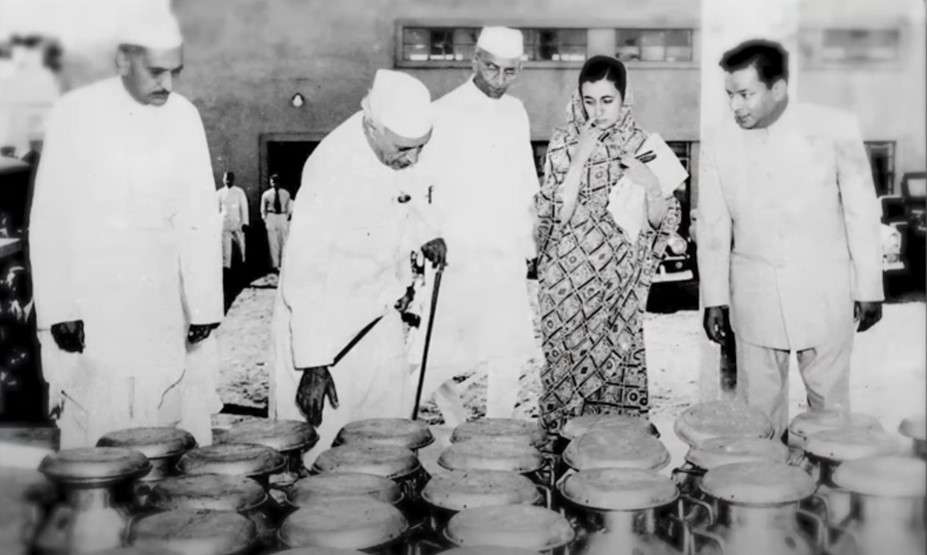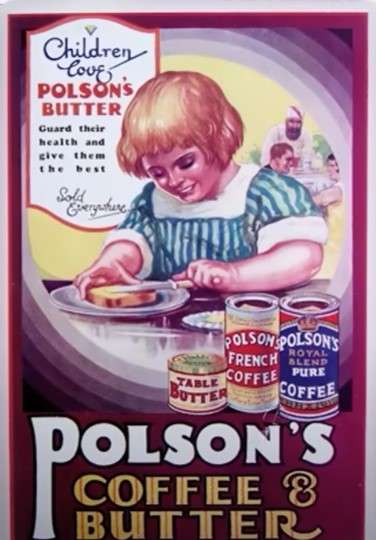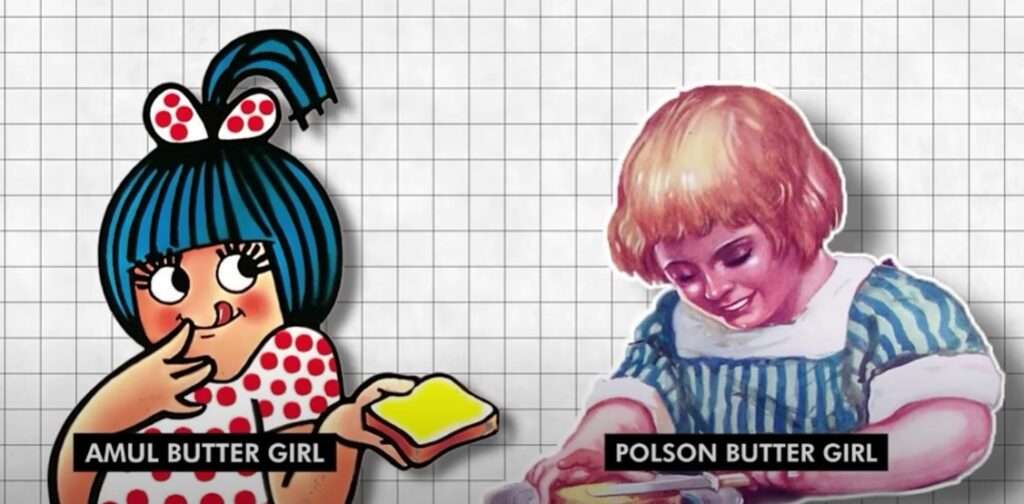AMUL is a household name in India which has its roots in the Kaira Co-operative Union. Under the leadership of Dr. Verghese Kurien, farmers benefited from a white revolution started by him. The white revolution was so successful that it made India from a milk dependent country to the largest milk producer in the world.
Pestonji Edulji started the company, Polson. In 1940s India, a butter brand that was popular in Indian households was Polson butter. Under the Bombay Milk Scheme of 1945, milk had to be transported from Kaira to Bombay. The contract to supply milk was given to the company, Polson which had a manufacturing unit in Kaira, Gujarat. As a result, Polson got involved in the business of milk transportation and due to which, earned a lot of profits. But these profits weren’t shared with the grassroot level i.e., the dairy farmers and these farmers had to sell their milk to the contractors at a fixed rate. This increased frustration of farmers in Gujarat.
Under the guidance of Tribhuvandas Patel, the farmers in Gujarat went to meet Sardar Vallabhbhai Patel in 1945 and explained their problems to him. The outcome of which was the famous statement given by Sardar Vallabhbhai Patel- ‘’Farmers of Kaira District, Unite!”. To which, the farmers got the idea of forming a Farmers’ Co-operative where the farmers could sell milk by themselves. This led to the formation of the Kaira District Co-operative Milk Producers’ Union Limited. This Co-operative demanded that the then British Government in India should buy milk directly from them. But the British Government refused this demand and then the farmers went on a strike. As the strike hampered milk supply, the British Government ultimately gave in to the Co-operative demand.
The Co-operative had a three-tier structure. At the bottom was the village co-operative societies. In the middle, the member unions. On the top, the state federation.
With the country’s independence in 1947, the Co-operative started to grow to include more farmers.
Father of the White Revolution
Dr. Verghese Kurien is known as the Father of the White Revolution in India. His journey towards making India from a milk deficient to a milk surplus country started when the government made him an Officer of the Dairy Division in May 1949. He was sent to a butter-making facility run by the government in Anand, Gujarat.
The government building Dr. Verghese Kurien was working as an officer, was also shared by the Kaira Co-operative Union. It is here where he met Tribhuvandas Patel who was working passionately to build the Kaira Co-operative Union to compete with the Polson company. Dr. Kurien was impressed by Tribhuvandas Patel and when his tenure ended as an officer, he decided to join the Kaira Co-operative Union as their Executive Head.
In his autobiography, ‘I Too Had A Dream’, Dr. Verghese Kurien says that he didn’t stay back due to a noble intention, nor did he want to change the world, but he stayed back because he enjoyed the work of helping farmers. He had realized that making money wasn’t the only source of satisfaction. Dhruv Rathee states that you get satisfaction in your life by doing something you love ie. where your passion and interest lie. While looking for satisfaction in his work, Dr. Kurien ended up changing the country.
Impact of White Revolution in India
By 1953, so much milk in India was being produced that the Bombay Milk Scheme couldn’t absorb all the milk. The extra milk was used to produce other milk products. They did try to produce milk powder but faced a problem as buffalo milk cannot be easily spray dried to make milk powder. This required technological innovation which was brought about by Dr. Kurien’s friend, Dr. Harichand Megha Dalay. He was a tech wizard with whose help, the world’s first buffalo milk spray drier was invented.

On 31st October 1955, i.e. on Sardar Vallabhai Patel’s birthday was the day when Kaira District Co-operative Milk Producers’ Union Limited first milk powder plant was inaugurated. At that time, it was Asia’s largest milk powder plant which produced 1 lakh litre of milk per day and the first plant to produce buffalo milk powder.
The birth of AMUL
When it was decided that the Kaira District Co-operative Milk Producers’ Union Limited would produce dairy products, they needed a brand name under which their products could be marketed and sold. In 1957, a chemist working in the lab suggested the name, ‘Amul’. The word Amul is derived from the Sanskrit word, ‘Amulya’ which means ‘Priceless’. Also, it served well as an abbreviation for Anand Milk Union Limited (AMUL).
Amul Butter v.s. Polson Butter

Compared to Polson Butter, Amul Butter didn’t fare well. Milk was turned into cream on the same day because of which it was white in color. On the other hand, Polson butter was made of stale cream. Polson would put more salt in its butter as this would increase the shelf life of the product. Polson Butter was made of cow’s milk which gave it a yellow color. The product, Polson Butter fared better as compared to Amul Butter due to its salty taste (which also meant the product lasted longer) and the yellowish color which Indian masses were used to.
In order to compete with Polson, Amul had to add salt to its butter and add coloring agents to bring out the yellow color. Initially Dr. Kurien wasn’t pleased with this but over time, he realized that consumer satisfaction is important in order for the company to survive in the market. This change in Amul butter proved to be successful and ultimately made Amul butter to sell more as compared to Polson Butter.
Amul Butter Girl

As part of its marketing strategy, Amul decided to use an Amul Butter Girl. The image of the iconic Amul Girl was created by Sylvester da Cunha in 1966. This was in response to Polson’s Butter Girl.
The end of Polson Butter
Seeing the success of Kaira’s Union brand, Amul, more unions started to emerge in the various districts of Gujarat. To avoid having many unions competing against each other, the unions united under the Gujarat Cooperative Milk Marketing Federation (GCMMF) in 1973. Kaira Union agreed to give their brand name, Amul to the GCMMF.
Due to the success of AMUL, Polson started to lose sales. But the biggest blow to Polson came from a government policy which reserved the dairy industry in India for the cooperative sector. As Polson was a private company, it ended its dairy activities. Today, we can see the company Polson in the business of natural tanning materials and eco-friendly leather chemicals.
Operation Flood
In order to replicate the Amul model all over India, Operation Flood was launched in 1970. It was India’s largest dairy development program and the country’s largest rural employment program. This program changed the game for India as due to the success of Operation Flood, India no longer had to import milk from other countries. In the 1970s itself, India became self-sufficient in milk production. By 1998, India surpassed the United States of America as the world’s largest milk-producing country.
Dhruv Rathee feels that one of the major reasons for Amul’s success is their ability to constantly keep themselves relevant as per the times. Amul does so by adopting new technologies like during the Covid-19 pandemic, Amul ran an effective digitization strategy to promote their business.
Dr. Verghese Kurien has contributed a lot to the dairy industry in India and is rightly called as the ‘milk man of India’. From a milk deficient nation in the 1950s, today India contributes nearly 20 percent of global milk production.
As told by Dhruv Rathee, the story of Amul’s success isn’t limited to only one company, but it is the success of the entire country. This one cooperative made India a milk surplus country. As a result, hundreds of thousands of farmers were uplifted from poverty.
By: Kester Pereira

